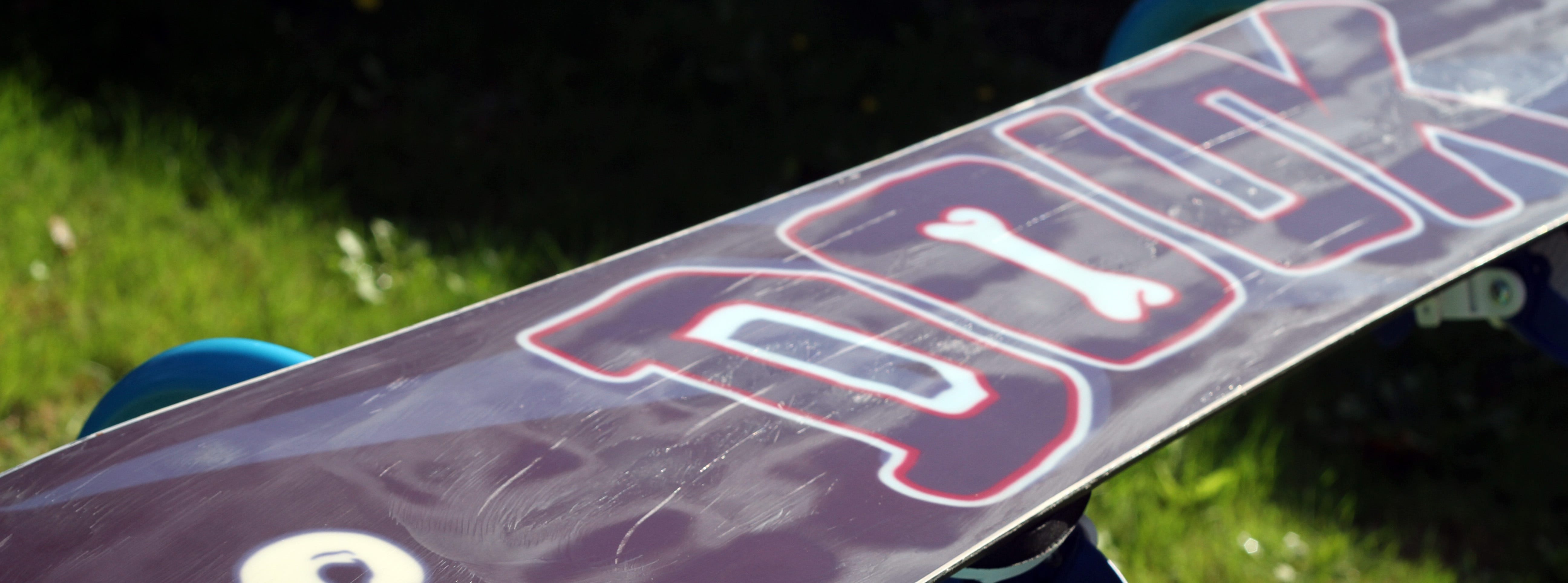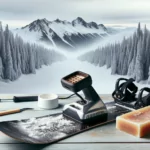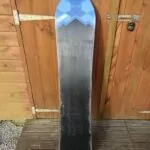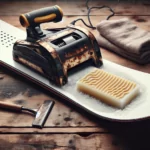Can’t figure out which wax to use on your snowboard? Indeed, the vast selection of snowboard waxes out there can be overwhelming. Yet, choosing the right one can be a game-changer in how you ride and how your snowboard performs. This article aims to clear your confusion by explaining various types of snowboard wax and their specific uses, helping you to select the perfect one for your snowboarding adventures.
Understanding the Importance of Waxing Snowboards
Snowboarding isn’t just a matter of strapping a board to your feet and hitting the slopes. To ensure an optimal performance, a keen understanding of your equipment is mandatory. Among the crucial aspects of snowboarding gear, waxing your snowboard holds prominence.
Need for waxing snowboards
Just as you maintain the engine of your car for a smooth ride, you need to wax your snowboard for a fluid and efficient snowboarding experience. Waxing helps reduce friction between the snow and your board, allowing you to glide seamlessly and quickly down the slopes.
Impact of waxing on snowboard performance
When you glide down a snow-capped slope, the friction generated melts the snow slightly. Waxing reduces friction and forms a thin layer of water, upon which your board slides. The smoother the glide, the faster the speed. Therefore, waxing directly impacts the performance and speed of your snowboard.
Preventing base damage through waxing
Besides enhancing your performance, waxing also plays a pivotal role in maintaining the health of your snowboard’s base. The wax forms a protective layer that prevents the board from scratching and getting damaged by uneven terrains, rocks, or debris. Extended waxing also prevents oxidization of the base material, thereby increasing the longevity of your snowboard.
Different Types of Snowboard Wax
Selecting the right type of wax can feel a bit overwhelming, given the variety available in the market. Here’s a closer look at the primary types of snowboard wax.
All temperature or universal wax
This is the go-to wax for many snowboarders. It works well in a broad range of temperature conditions, making it a practical and versatile choice.
Temperature specific wax
As the name suggests, this type of wax is specifically equipped to function optimally at certain temperature ranges. It offers the best performance under the specific conditions it’s meant for.
Fluorinated wax
This type of wax stands out due to its unique properties brought by the added fluorocarbons. The wax is recognized for its enhanced gliding properties, especially in wet snow conditions.
Eco-friendly wax
This is the choice for environmentally conscious snowboarders. It provides decent performance without the detrimental environmental impact associated with traditional waxes.
All-Temperature or Universal Wax
Defining all-temperature wax
All-temperature or universal wax is designed to cater to the broadest range of snow and weather conditions. It’s an all-around performer, designed to provide adequate gliding performance irrespective of the temperature.
When to use universal wax
Universal wax is best used when you’re unsure of the conditions you’ll encounter on the slopes or if the temperature varies considerably throughout the day. It may not outperform temperature-specific wax under specific conditions but provides consistent performance overall.
Benefits and drawbacks of universal wax
The major benefit of universal wax is its versatility. Regardless of the conditions, it provides consistent performance. However, it may not provide the optimal glide in more extreme temperature conditions, where a temperature-specific wax would shine.
Temperature Specific Wax
Understanding temperature specific wax
Temperature-specific wax is engineered for optimal performance under specific temperature ranges. It is usually distinguished into cold weather and warm weather waxes.
Impact of weather conditions on wax selection
The current weather conditions while you snowboard help determine the choice of wax. A temperature-specific wax helps to adapt to the changing snow conditions, resulting in improved board performance.
Difference between cold and warm weather wax
Cold-weather wax performs best under freezing conditions, providing optimal glide on hard, icy snow. Warm-weather wax, on the other hand, is ideal for spring snowboarding or slushy conditions providing a smooth glide in warmer temperatures.
Fluorinated Wax
What is fluorinated wax
Fluorinated wax invites a blend of fluoro powders or blocks, which enhance gliding capabilities. It repels water more than standard wax, owing to the hydrophobic properties of fluorocarbons.
Performance advantages of fluorinated wax
The primary advantage of fluorinated wax is its ability to offer impressively fast glides, especially over wet snow. The fluorocarbons help repel the moisture, reducing friction and thereby accelerating glides.
Despite the cutting-edge characteristics, fluorinated wax possesses environmental concerns. Fluorocarbons are known to have negative environmental and health impacts. Consequently, there is an increasing inclination towards eco-friendly alternatives in recent times.
Eco-Friendly Wax
The rise of eco-friendly snowboard wax
Given the emerging consciousness towards the environment and health, eco-friendly wax has been gaining considerable attention. These waxes are typically plant-based and biodegradable causing minimal environmental harm.
Performance comparison with traditional wax
While eco-friendly wax may not provide the ultra-fast glides as its fluorinated counterpart, it offers decent gliding properties. The major selling point of eco-friendly wax certainly leans more towards its environmental benefits.
Eco-friendly brands in the market
Today, multiple brands offer eco-friendly wax alternatives including Purl Wax, MountainFlow Eco-Wax, and Green Ice Wax, among others, giving snowboarders several options to opt for sustainable alternatives.
How to Choose the Right Wax for Your Snowboard
Factors to consider when selecting snowboard wax
The choice of snowboard wax hinges on multiple factors such as snow temperature, your snowboarding style, and environmental considerations. Knowing the imminent snow conditions, the snowboarding area temperature, your intensity and style of snowboarding, along with your stance on environmental impact, will guide your decision.
The role of snowboarding style in wax selection
Aggressive snowboarders requiring maximum speed typically lean towards high fluorinated or temperature-specific wax. The wax choice varies for beginners or less aggressive snowboarders who speed isn’t their primary focus would find universal wax or eco-friendly wax sufficient.
Snow and weather conditions’ impact on wax choice
Snow and weather conditions significantly influence the choice of wax. Hard, icy conditions call for cold-temperature wax, while warm-weather wax is suitable for slushy, wet snow. Universal wax is a viable alternative when conditions vary.
Waxing Techniques for Snowboards
Hot waxing method
Hot waxing involves melting the wax and applying it to the base of the snowboard. This method allows the wax to penetrate deeply, offering the best glide and longest-lasting protection.
Rub-on waxing method
This method involves rubbing the wax directly onto the board’s base and then buffing it. It’s quick and easy but doesn’t last as long as hot waxing.
Scraping and buffing after waxing
After applying the wax, you’ll need to scrape off the excess wax using a plastic scraper and then buff the base with a nylon brush. This step is vital as it smooths out the base for a more streamlined glide.
Tools Required for Snowboard Waxing
Wax iron
A wax iron is a necessary tool designed to melt the wax effortlessly without overheating it. Using a traditional iron isn’t recommended as they lack temperature control that can damage the base of the snowboard.
Snowboard wax
It’s the most crucial part. Depending on the selection guide mentioned above, your choice of wax can vary considering numerous options available.
Plastic scraper
The plastic scraper comes in handy to scrape off excess wax from the board smoothly without damaging it.
Nylon brush
Finally, a nylon brush is used to buff the snowboard base. Buffing helps to create a structured base, leading to quicker glides and improved speed.
Safety Precautions when Waxing Snowboards
Handling the wax iron
Handling the wax iron requires carefulness. Overheating the wax can cause harmful fumes, and too hot an iron can damage your board. Always use a wax iron with accurate temperature control.
Ventilation during waxing
Ensure to wax your snowboard in a well-ventilated area to avoid inhaling potentially harmful fumes, especially while using fluorinated wax.
Appropriate disposal of excess wax
Dispose of the scraped-off excess wax appropriately. Avoid washing it off since it can be harmful to the water supply or sewer system, especially for fluorinated and petroleum-based waxes.
Lastly, remember that waxing isn’t a once-in-a-lifetime thing. It’s a part of the ongoing maintenance of your snowboard. Opt for regular waxing for optimal performance and longevity of your board.
- What Snowboard Bindings Should I Get? - January 23, 2024
- What Size Screws For Snowboard Bindings? - January 23, 2024
- How To Snowmobile On Water? - January 23, 2024










